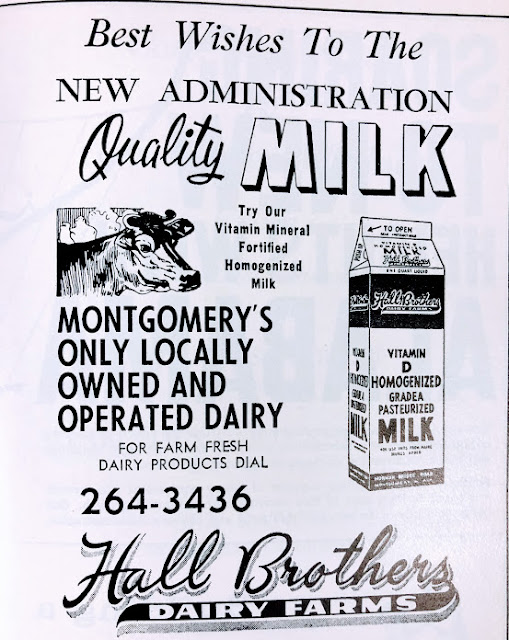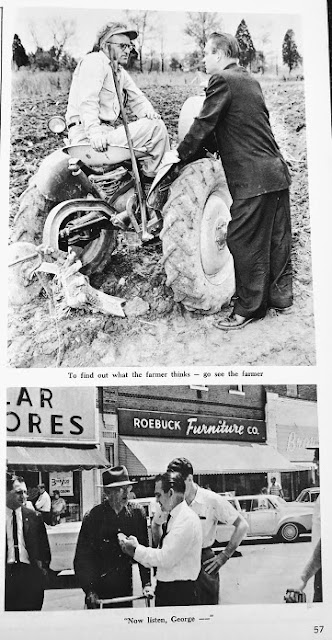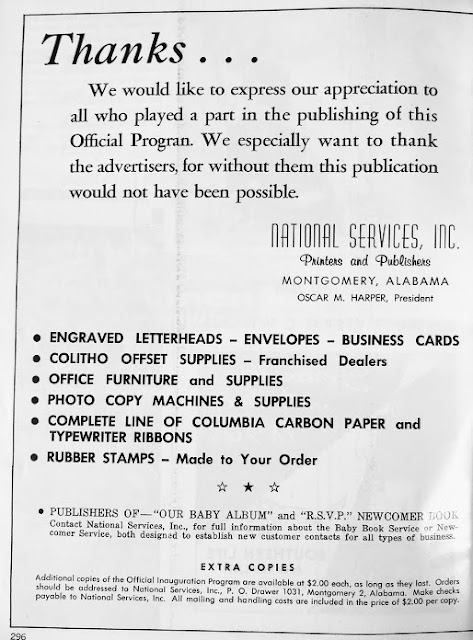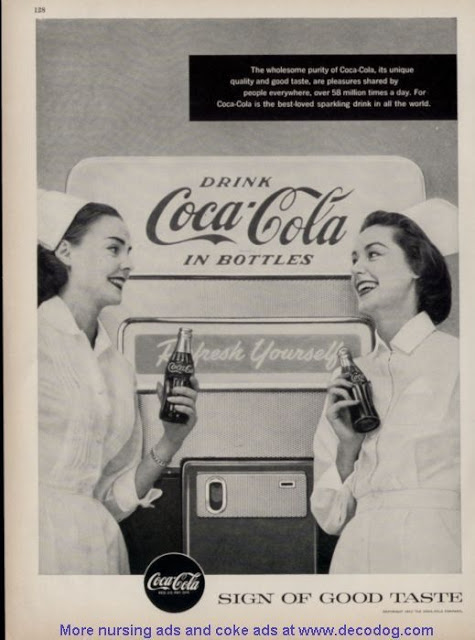I'm not going to linger on George Wallace's life or career. You can find long entries on his life and political career at both the Encyclopedia of Alabama and Wikipedia. I have put some comments below many of the photos here.
In 1958 Wallace, who had been a circuit judge since 1952, ran against John Patterson for governor and lost by over 34,000 votes. Patterson had been endorsed by the Ku Klux Klan, Wallace by the NAACP--as the lesser of two evils, no doubt. As Wikipedia notes, "...aide Seymore Trammell recalled Wallace saying, "Seymore, you know why I lost that governor's race? ... I was outniggered by John Patterson. And I'll tell you here and now, I will never be outniggered again." Whether Wallace put it quite that way has been disputed, but he did make sure it came to pass.
Wallace won decisively in both the Democratic primary and the November 1962
gubernatorial election. This program was issued to commemorate that win. The
book contains some text and many photos, but the bulk of it is advertising of a
special sort.
I bet Wallace, "The Fighting Little Judge", struck this pose a few times on that campaign and those that followed.
Of course, the Wallace family story is told.
One word in that Allis-Chalmers ad ironically stands out, doesn't it?
Many photos, such as this one of Wallace and his brothers, are framed by congratulatory advertisements.
Aronov Realty continues to operate today.
You can see some of this dairy's products here. In 1967 the business was 52 years old, but is no longer operating.
More family history
Another typical Wallace pose
I guess when you go see the farmer you gotta wear a suit.
Ah, Lurleen...I wonder what she thought of all this...really...deep down....
The inauguration book is filled with pages and parts of pages containing ads.
This program is massive; it has 296 pages. I did not find a single black
face within it.
Wallace would recycle his 1962 campaign slogan for a presidential run later in the decade.



















































